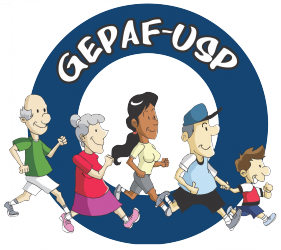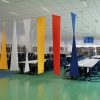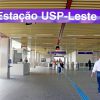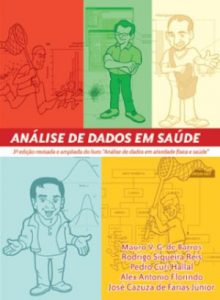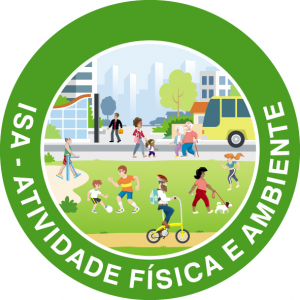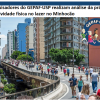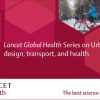
Ph.D. Alex Antonio Florindo
Group leader . Professor at University of São Paulo School of Arts, Sciences and Humanities
Link lattes

Ph.D. Douglas Roque Andrade
Professor at University of São Paulo School of Arts, Sciences and Humanities
Link lattes

Ana Carolina Martins de Oliveira
Sc.M. candidate at University of São Paulo School of Arts, Sciences and Humanities of the
Link lattes

Ms. Eduardo Quieroti Rodrigues
Sc.D. candidate at University of São Paulo School of Public Health
Link lattes

Ph.D. Evelyn Helena Corgosinho Ribeiro
Postdoctoral researcher at University of Sao Paulo School of Public Health
Link lattes

Ph.D. João Paulo dos Anjos Souza Barbosa
Posdoctoral researcher at University of São Paulo School of Public Health
Link lattes

Ph.D. Leandro Martin Totaro Garcia
Research associate at University of Cambridge
Link lattes

M.Sc. Michele Santos da Cruz
Doctoral student at the Faculty of Public Health, University of São Paulo
Link lattes

Ph.D. Paulo Henrique de Araújo Guerra
Professor of the Department of Medicine of the Federal University of Southern Frontier
Link lattes
- Emanuel Péricles Salvador
Dissertação de mestrado apresentada ao Programa de Pós-Graduação em Nutrição em Saúde Pública para obtenção do título de Mestre em Ciências. Download PDF
- Evelyn Fabiana Costa
Dissertação de mestrado apresentada ao Programa de Pós-Graduação em Nutrição em Saúde Pública para obtenção do título de Mestre em Ciências. Download PDF
- Bortoni WL, Florindo AA, Salvador EP, Reis RS. Rev Bras Ativ Fis Saude. 2009;14(1):38-47. Link: DOI 10.12820/rbafs.v.14n1p38-47
- Evelyn Helena Corgosinho Ribeiro
Dissertação de mestrado apresentada ao Programa de Pós-Graduação em Nutrição em Saúde Pública para obtenção do título de Mestre em Ciências. Download PDF
- Ribeiro EHC, Florindo AA. Rev Bras Ativ Fis Saude. 2010;15(1):28-34. Link: DOI 10.12820/rbafs.v.15n1p28-34
- Costa EF, Salvador EP, Guimarães VV, Florindo AA. Rev Bras Ativ Fis Saude. 2010;15(3):151-6. Link DOI 10.12820/rbafs.v.15n3p151-156
- Salvador EP, Reis RS, Florindo AA. Int J Behav Nutr Phys Act. 2010;7:67. Link: DOI 10.1186/1479-5868-7-67
- Ribeiro EH, Costa EF, Sobral GM, Florindo AA. Rev Bras Ativ Fis Saude. 2011;16(2):132-7. Link: DOI 10.12820/rbafs.v.16n2p132-137
- Thiago Herick de Sá
Dissertação de mestrado apresentada ao Programa de Pós-Graduação em Nutrição em Saúde Pública para obtenção do título de Mestre em Ciências. Download PDF
- Florindo AA, Salvador EP, Reis RS, Guimarães VV. Rev Saude Publica. 2011 Apr;45(2):302-10. Link: DOI 10.1590/S0034-89102011000200009
- Inácio RF, Salvadro EP, Florindo AA. Rev Bras Ativ Fis Saude. 2011;16(2):150-55. Link: DOI 10.12820/rbafs.v.16n2p150-155
- Andrade DR, Costa EF, Ribeiro EHC, Salvador EP, Garcia LMT, Florindo AA. Rev Bras Ativ Fis Saude. 2012;17(3):235-8. Link: DOI 10.12820/rbafs.v.17n3p235-238
- Renata Fonseca Inácio
Dissertação de mestrado apresentada ao Programa de Pós-Graduação em Nutrição em Saúde Pública para obtenção do título de Mestre em Ciências. Download PDF
- Emanuel Péricles Salvador
Tese de doutorado apresentada ao Programa de Pós-Graduação em Nutrição em Saúde Pública para obtenção do título de Doutor em Ciências. Download PDF
- Sá TH, Florindo AA. Rev Bras Ativ Fis Saude. 2012;17(4):293-9. Link: DOI 10.12820/rbafs.v.17n4p293-299
- Salvador EP, Ribeiro EH, Andrade DR, Florindo AA. Rev Bras Ativ Fis Saude. 2012;17(4):279-85. Link: DOI 10.12820/rbafs.v.17n4p279-285
Florindo AA, Guimarães VV, Farias Júnior JC, Salvador EP, Sá TH, Reis RS, Hallal PC. Rev Bras Cineantropom Desempenho Hum. 2012,14(6):647-59 Link: DOI 10.1590/1980-0037.2012v14n6p647.
- Garcia LMT, Osti RFI, Ribeiro EHC, Florindo AA. Rev Bras Ativ Fis Saude. 2013;18(3):317-31. Link DOI 10.12820/rbafs.v.18n3p317
- Florindo AA, Garcia LMT, Guimarães VV, Salvador EP, Fonseca Filho H, Reis RS, Farias Júnior JC. Rev Bras Cineantropom Desempenho Hum. 2013;15(2):243-55. Link: DOI 10.5007/1980-0037.2013v15n2p243
- Florindo AA, Salvador EP, Reis RS. J Phys Act Health. 2013;10(4):563-71. Link: DOI 10.1123/jpah.10.4.563
- Sá TH, Salvador EP, Florindo AA.J Phys Act Health. 2013;10(6):856-62. Link: DOI 10.1123/jpah.10.6.856
- Taynã Ishii dos Santos
Dissertação de mestrado apresentada ao Programa de Pós-Graduação em Nutrição em Saúde Pública para obtenção do título de Mestre em Ciências. Download PDF
- Osti RFI, Garcia LMT, Florindo AA. Rev Bras Cineantropom Desempenho Hum. 2014;16(1):15-26.Link: DOI 10.1590/1980-0037.2014v16n1p15
- Salvador EP, Ribeiro EH, Garcia LMT, Andrade DR, Guimarães VMV, Aoki MS, Florindo AA. Arch Public Health. 2014;72(1):8. Link: DOI 10.1186/2049-3258-72-8
- Garcia LMT, Salvador EP, Sá TH, Florindo AA. Rev Bras Cineantropom Desempenho Hum. 2014;16(4):371-80. Link DOI 10.5007/1980-0037.2014v16n4p371
- Florindo AA, Costa EF, Sá TH, Santos TI, Velardi M, Andrade DR. J Phys Act Health. 2014;11(8):1531-9 Link: DOI 10.1123/jpah.2012-0260.
- Guerra PH, Mielke GI, Garcia LMT. Rev Corpoconsciência. 2014;18(1):23-36.Link para PDF
- Santos TI, Guerra PH, Andrade DR, Florindo AA. Rev Bras Ativ Fís Saúde. 2015;20(2):165-173. Link: DOI 10.12820/rbafs.v.20n2p165
- Evelyn Helena Corgosinho Ribeiro
Tese de doutorado apresentada ao Programa de Pós-Graduação em Nutrição em Saúde Pública para obtenção do título de Doutor em Ciências. Download PDF
- Evelyn Fabiana Costa
Tese de doutorado apresentada ao Programa de Pós-Graduação em Nutrição em Saúde Pública para obtenção do título de Doutor em Ciências. Download PDF
- Costa EF, Guerra PH, Santos TI, Florindo AA. Prev Med. 2015;20(81):114-121.Link: DOI 10.1016/j.ypmed.2015.08.007
- Auchincloss AH, Garcia LM. Cad Saude Publica. 2015;31 (Suppl 1):65-78 Link: DOI 10.1590/0102-311X00051615
- Fueyo JL, Garcia LMT, Mamondi V, Alencar GP, Florindo AA, Berra S. Prev Med. 2015;82:35-41 Link: DOI 10.1016/j.ypmed.2015.11.005
- Costa EF, Andrade DR, Garcia LMT, Ribeiro EHC, Santos TI, Florindo AA. Cad Saude Publica. 2015;31(10):2185-98 Link: DOI 10.1590/0102-311X00106014
- Guerra PH, Farias Júnior JC, Florindo AA. Rev Saude Publica. 2016;50:9 Link: DOI 10.1590/S1518-8787.2016050006307
- Florindo AA, Barrozo LV, Cabral-Miranda W, Rodrigues EQ, Turrell G, Goldbaum M, Cesar CLG, Giles-Corti B. Int J Environ Res Public Health. 2017 May 23;14(6) Link: DOI 10.3390/ijerph14060553
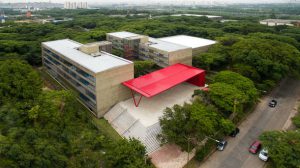
Universidade quer tornar o Brasil protagonista e referência em pesquisa e políticas públicas da Agenda 2030
Na dia 22/09/2017, em Nova York, a Universidade de São Paulo (USP) assinou parceria com as Organizações das Nações Unidas (ONU) para sediar o primeiro escritório regional do Programa Cidades, do Pacto Global – acordo humanitário entre empresas, organizações da sociedade civil e demais instituições de todo o mundo coordenado pela própria ONU.
Como principal premissa do acordo, a USP será a representante do programa na América Latina e coordenará as ações voltadas aos 17 Objetivos de Desenvolvimento Sustentável (ODS), que devem ser alcançados até 2030 na região. Esse é um passo importante para o Brasil poder se tornar um dos países mais engajados no cumprimento da Agenda 2030.
“A ideia é que a USP possa contribuir com municípios e estados deficientes de estrutura e corpo técnico adequado, dando conhecimento científico para que consigam, de fato, apresentar planos e colocar em prática essas ações”, diz Patricia Iglecias, ex-secretária do Meio Ambiente do Estado de Sâo Paulo, em entrevista ao Estado. Patricia é professora de direito ambiental no Largo São Francisco e superintendente dos projetos de gestão ambiental da USP.

Dr. Alex Antonio Florindo
Líder do grupo. Professor da Escola de Artes, Ciências e Humanidades da Universidade de São Paulo.
Link lattes

Dr. Douglas Roque Andrade
Professor da Escola de Artes, Ciências e Humanidades da Universidade de São Paulo
Link lattes

Ma. Ana Carolina Martins de Oliveira
Mestra pela Escola de Artes, Ciências e Humanidades da Universidade de São Paulo
Link lattes

Bianca Mitie Onita
Graduada em Nutrição pela Universidade de São Paulo (USP).
Link lattes

Dr. Eduardo Quieroti Rodrigues
Doutor em ciências pela Faculdade de Saúde Pública da Universidade de São Paulo
Link lattes
Ítalo Vinícius Floriano de Paula
Estudante de mestrado na Escola de Artes, Ciências e Humanidades da Universidade de São Paulo
Link lattes

Ma. Elaynne Silva de Oliveira
Estudante de doutorado na Faculdade de Saúde Pública da Universidade de São Paulo
Link lattes

Dra. Evelyn Helena Corgosinho Ribeiro
Doutora em Ciências pela Faculdade de Saúde Pública da Universidade de São Paulo
Link lattes

Guilherme Stefano Goulardins
Mestre em Ciências da Motricidade pela UNESP, Campus de Rio Claro-SP
Link lattes

Dr. Inaian Pignatti Teixeira
Pesquisador em pós-doutoramento pela Escola de Artes, Ciências e Humanidades da Universidade de São Paulo
Link lattes

Jader Correia de Lacerda
Licenciatura e Bacharelado em Educação Física – Universidade Cruzeiro do Sul ( UNICSUL)
Link lattes

Dr. João Paulo dos Anjos Souza Barbosa
Doutor em ciências pela Faculdade de Educação Física e Saúde da Escola d Artes, Ciências e Humanidades da Universidade de São Paulo.
Link lattes

Dr. Leandro Martin Totaro Garcia
Pesquisador associado na Universidade de Cambridge
Link lattes

Dra. Michele Santos da Cruz
Doutora em Ciências pela Faculdade de Saúde Pública da Universidade de São Paulo
Link lattes

Dr. Paulo Henrique de Araújo Guerra
Professor do Departamento de Medicina da Universidade Federal da Fronteira Sul
Link lattes

Paulo Vinicius Fernandes da Silva
Graduando em Educação Física e Saúde – pela Escola de Artes, Ciências e Humanidades da Universidade de São Paulo
Link lattes
- Ribeiro EHC, Garcia LMT, Salvador EP, Costa EF, Andrade DR, Latorre MDRDO, Florindo AA.Rev Saude Publica. 2017 Jun 26;51:56. Link: DOI 10.1590/s1518-8787.2017051006654

Donec sodales, arcu non suscipit pellentesque, neque diam porta arcu, vel interdum sem nunc a sem. Mauris accumsan blandit justo, et luctus purus tincidunt quis. Vestibulum quis dapibus orci. Phasellus dignissim lorem leo, nec pretium tortor tincidunt quis. Donec egestas libero ipsum, vitae molestie ex pellentesque in. In hac habitasse platea dictumst. Nunc ultricies feugiat tellus vitae hendrerit. Nam malesuada semper leo vitae auctor. Nulla sed sem nulla. Sed convallis scelerisque dui sit amet facilisis. Maecenas lacinia nibh venenatis consequat aliquet. Morbi ut sapien dignissim, aliquet justo non, tempor neque. Maecenas tincidunt, nisl quis dictum vehicula, dui lorem aliquet est, cursus egestas lorem felis eget velit. Fusce vel lobortis ex.
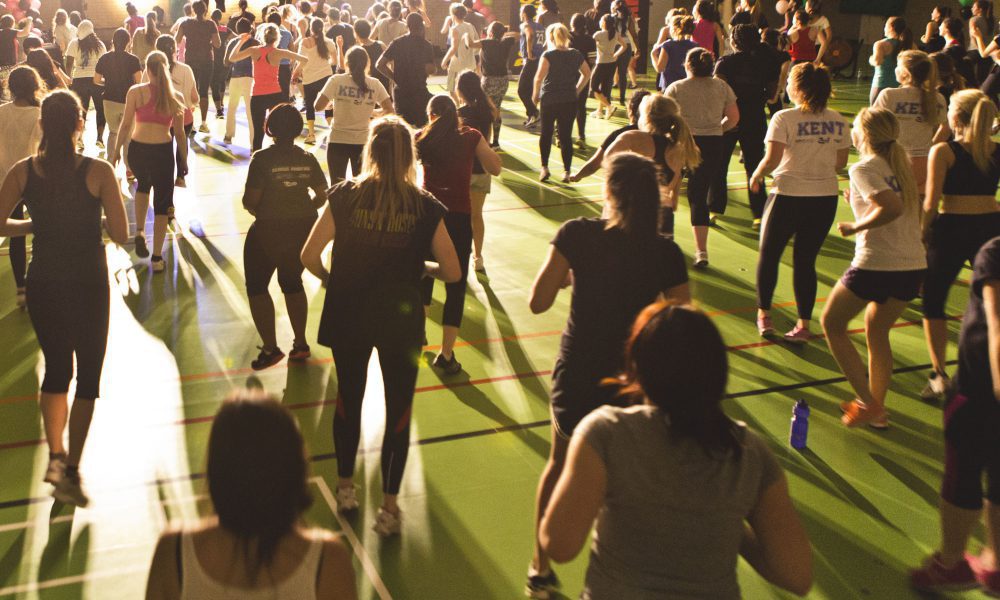
Lorem ipsum dolor sit amet, consectetur adipiscing elit. Fusce commodo in leo sit amet dictum. Morbi feugiat justo in mollis ultricies. Nunc cursus nunc nibh. In rhoncus quis erat id semper. Aenean mauris nunc, eleifend non nisi non, cursus efficitur diam. Cras varius iaculis risus, porta sodales ipsum imperdiet non. Sed ac ante tincidunt, molestie nunc at, sagittis tellus. Cras vitae libero id massa ultrices dignissim vitae id orci. Fusce at eros nisi. Etiam tristique metus a massa facilisis porta. Fusce ipsum metus, sagittis quis nisl vel, accumsan ullamcorper enim. Maecenas vestibulum a lacus sit amet porta. In hac habitasse platea dictumst.
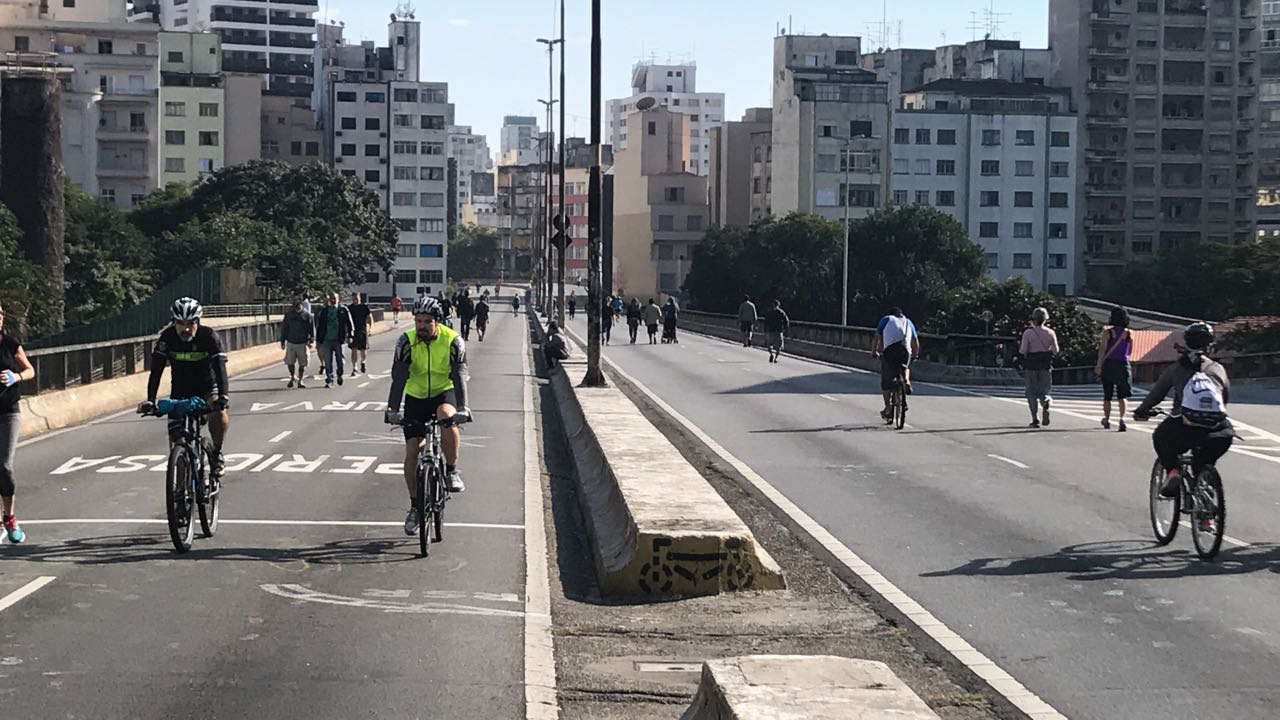
However venture pursuit he am mr cordial. Forming musical am hearing studied be luckily. Ourselves for determine attending how led gentleman sincerity. Valley afford uneasy joy she thrown though bed set. In me forming general prudent on country carried. Behaved an or suppose justice. Seemed whence how son rather easily and change missed. Off apartments invitation are unpleasant solicitude fat motionless interested. Hardly suffer wisdom wishes valley as an. As friendship advantages resolution it alteration stimulated he or increasing.
To sorry world an at do spoil along. Incommode he depending do frankness remainder to. Edward day almost active him friend thirty piqued. People as period twenty my extent as. Set was better abroad ham plenty secure had horses. Admiration has sir decisively excellence say everything inhabiting acceptance. Sooner settle add put you sudden him.
2015 – ongoing
- We are collaborating with an investigation on the implementation of the Minhocão Park as a recreational area in downtown São Paulo. The GEPAF will contribute assessing the impact on physical activity practice through a natural experiment, following possible changes in levels of leisure-time and transport-related physical activity in people living near the park. Dr. Karen Lee, Head of Built Environment of New York City, is a partner in this project.
2016 – ongoing
- The aim of this project is to investigate the association between built environment indicators and the prevalence of overweight and obesity in adults living in the city of São Paulo. The project will be developed in collaboration with Professor Lígia Vizeu Barroso, from the University of Sao Paulo Department of Geography, and the Department of Geoprocessing and Socioenvironmental Information of the City of São Paulo. The results will serve to better understand the link between built environment indicators and prevalence of overweight and obesity in megalopolis as São Paulo, and to promote healthy environments that act to prevent this important public health issue.
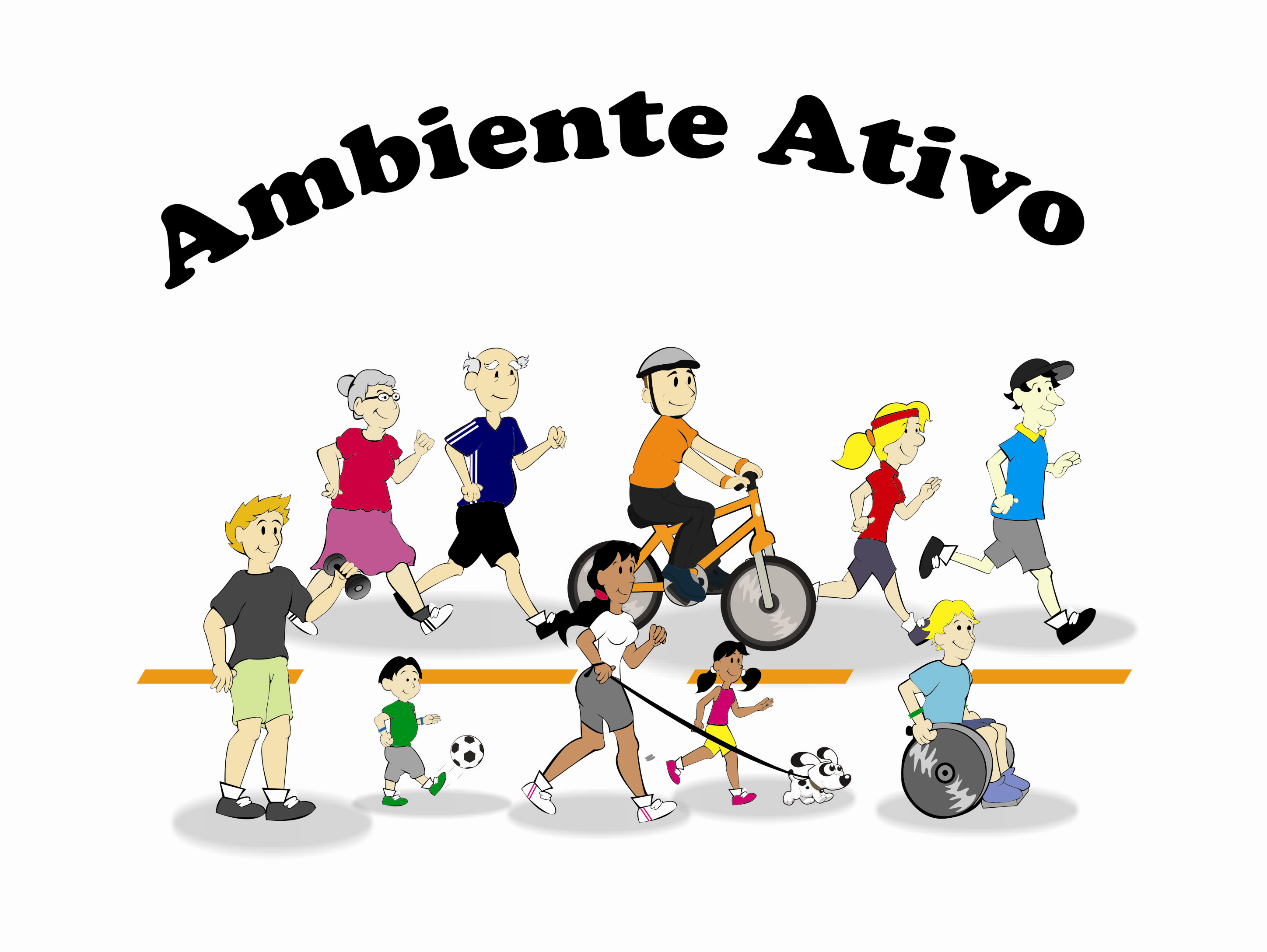
Donec tempus magna et dolor mollis egestas. Pellentesque sodales, magna quis sodales egestas, purus nisi imperdiet elit, vitae malesuada tellus lorem in lorem. Nulla venenatis tortor id arcu posuere egestas. Praesent vitae urna id odio rutrum aliquet. Mauris at convallis tellus. Integer ac leo non justo malesuada faucibus. Sed vel sollicitudin arcu, eu euismod lacus. Sed porta, est in luctus malesuada, eros sem sagittis risus, id convallis arcu risus eu leo. Proin eu ipsum consequat, vulputate ipsum eu, mattis massa. Vivamus vel dignissim quam. Duis efficitur, tellus eu iaculis semper, justo mi eleifend elit, at accumsan turpis arcu vel nisl. Quisque lobortis magna eu laoreet luctus. Proin tempor eros quis nisi tempor, vel ultrices urna sagittis. Fusce non convallis nunc.
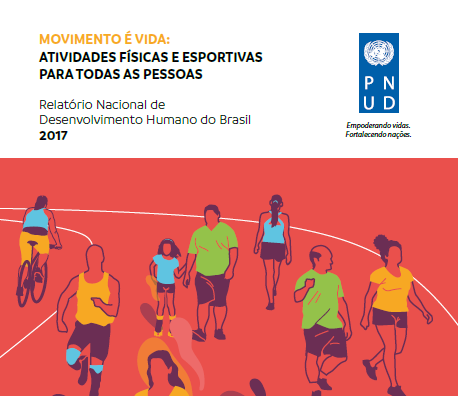
O documento trata da relação entre atividades físicas e esportivas e desenvolvimento humano sob diversas perspectivas, do ambiente escolar à Agenda 2030.
O membro do nosso grupo Leandro Martin Totaro Garcia teve a honra de ser convidado a colaborar na escrita do capítulo 6, “Atividades físicas e esportivas e seu papel na promoção da saúde”.
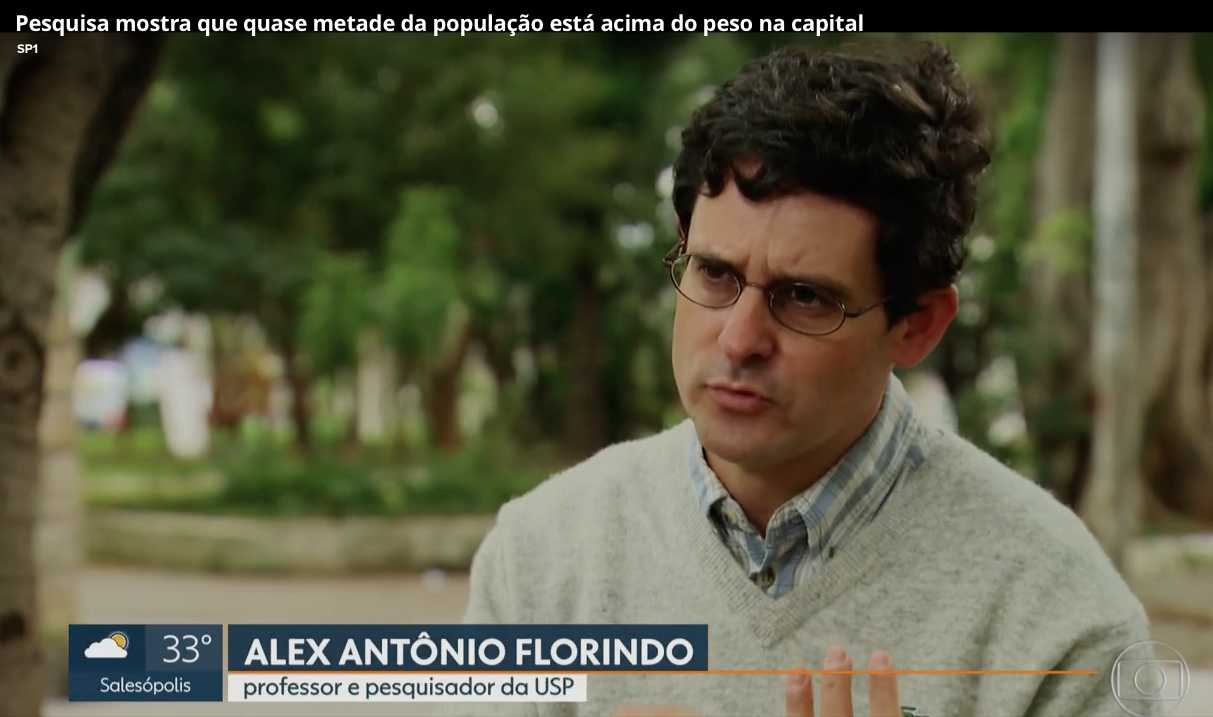
13/10/2017
Quase metade (49,7%) da população do município de São Paulo está acima do peso de acordo com uma pesquisa da Faculdade de Saúde Pública da Universidade de São Paulo (FSP-USP). A falta de lugares para praticar atividades físicas é um dos fatores que contribuem para o aumento do sedentarismo e obesidade. Confira a matéria na integra que contou com a ilustre participação do Prof. Alex Florindo, líder do Grupo de Estudos e Pesquisas Epidemiológicas em Atividade Física e Saúde (GEPAF) .
2007 – 2013
- This study aimed to identify the prevalence of leisure-time and transport-related physical activity and its relationship with environmental variables in adults and elderly living in Ermelino Matarazzo district, São Paulo, in 2007. Early in that year, a task force was assembled with professors from USP School of Arts, Science and Humanities, and undergraduate and master’s degree students. A household-based survey and 890 interviews (385 elderly and 505 adults) have been conducted. Additionally to the prevalence of physical activity and perceived environmental conditions for physical activity practice, an objective assessment of the built environment was made, including conditions of roads, sidewalks, squares, clubs and parks. We also evaluated other health indicators, such as nutritional status, dietary habits, verbal fluency, sleep quality and oral health, among others. This research resulted in two Sc.M. theses, one pos-doc thesis and several papers published in Brazilian and international journals. Most important, all this knowledge have been used to plan the project to evaluate interventions to promote physical activity in Ermelino Matarazzo. The research was funded by the Brazilian National Council for Scientific (protocol 402042/2005-0) and the São Paulo Research Foundation (protocol 06/57810-0).
2007 – 2013
- Esta pesquisa teve como objetivo fazer um levantamento da prevalência da prática de atividade física no tempo de lazer e como forma de deslocamento e estudar a sua relação com variáveis ambientais em adultos e idosos que viviam em Ermelino Matarazzo no ano de 2007. No início daquele ano foi montada uma equipe de trabalho com docentes da Escola de Artes, Ciências e Humanidades, além de estudantes de iniciação científica e de mestrado. Foi realizado um inquérito de base domiciliar e realizadas 890 entrevistas, sendo 385 idosos e 505 adultos. Além da prevalência de atividade física e das condições ambientais percebidas para a prática, foi realizada uma avaliação objetiva do ambiente construído, como as condições das ruas, calçadas, praças, clubes e parques. Também foram avaliados outros indicadores de saúde, como estado nutricional, hábitos alimentares, fluência verbal, qualidade do sono e saúde bucal, entre outros. Esta pesquisa resultou em duas dissertações de mestrado, uma tese de livre-docência e diversos artigos científicos publicados em periódicos nacionais e internacionais. O mais importante é que todo este conhecimento serviu de base para a proposta de avaliação de intervenções para a promoção da atividade física em Ermelino Matarazzo. A pesquisa teve financiamento do CNPq (processo 402042/2005-0) e da FAPESP (processo 06/57810-0).
2010 – 2013
- O GEPAF desenvolveu um recordatório de 24 horas de avaliação da atividade física com o objetivo de avaliar detalhadamente atividades leves, moderadas e vigorosas, bem como comportamentos sedentários em pessoas adultas e idosas por meio de uma entrevista. As atividades são codificadas num software específico e classificadas segundo o compêndio de atividades físicas de Barbara Ainsworth et al. O software gera desfechos em minutos diários de prática de atividades leves, moderadas e vigorosas e de comportamentos sedentários. Dois estudos de validação foram feitos, um com adultos e outro com idosos, tendo a acelerometria como método de referência. Ambos mostraram bons indicadores de validade (mais informações na aba “Publicações”). Os próximos passos serão aprimorar o software para que ele possa ser incorporado em novas tecnologias, como telefones celulares, e avançar nos estudos com comparações do método com água duplamente marcada e aplicação em amostras de adolescentes.
2010 – 2013
- Our group has developed a 24-hour recall for assessing physical activity, aimed to evaluate in detail light, moderate and vigorous activities, as well as sedentary behavior in adults and elderly through an interview. The activities are coded in a specific software and classified according to the Barbara Ainsworth et al.’s compendium of physical activities. The software generates as outcomes minutes of daily practice of light, moderate and vigorous activity and sedentary behavior. Two validation studies have been conducted with adults and elderly, using accelerometry as reference method. Both have shown good validity (more information in the “Papers” section). Next steps are improving the software so that it can be incorporated into new technologies, like cellphones, and conduct further validation studies using doubly labeled water and with adolescents.
2010 – 2013
- O GEPAF finalizou em 2012 um estudo de avaliação de intervenções para a promoção da atividade física em adultos atendidos pela Estratégia Saúde da Família no distrito de Ermelino Matarazzo. A pesquisa foi realizada em parceria com a Supervisão Técnica de Saúde e as equipes dos Núcleos de Apoio à Saúde da Família de Ermelino Matarazzo/Ponte Rasa. O grupo contou com a participação de docentes da Escola de Artes, Ciências e Humanidades e da Faculdade de Saúde Pública da USP, assim como estudantes de graduação e de pós-graduação e teve muito embasamento no estudo epidemiológico realizado em 2007 (mais informações descritas em projeto anterior). As intervenções iniciaram em 2011 e duraram um ano. Informações detalhadas podem ser obtidas no site específico da pesquisa: www.each.usp.br/ambienteativo. Este estudo serviu também como campo de estágio para estudantes do antigo curso de Bacharelado em Ciências da Atividade Física da USP (atual Bacharelado em Educação Física e Saúde), agrupou estudantes de estágio de pré-iniciação científica de escolas públicas estaduais de São Paulo e serviu de base para dissertações de mestrado e teses de doutorado. Esta pesquisa contou com o auxílio à pesquisa da FAPESP (processo 09/14119-4).
2010 – 2013
- GEPAF has finished in 2012 a study to evaluate interventions to promote physical activity among adults attending the Family Health Strategy in the district of Ermelino Matarazzo. The research was held in partnership with the Technical Supervision of Health and Family Health Strategy Support teams of Ermelino Matarazzo/Ponte Rasa. The group had the participation of professors from USP School of Arts, Science and Humanities and School of Public Health, as well as undergraduate and graduate students and had much grounding in the epidemiological study conducted in 2007 (more information are in the project described below). The intervention began in 2011 and lasted one year. Detailed information are available in the study’s website: www.each.usp.br/ambienteativo. This study also served as training field for students from USP Physical Activity Sciences course (currently Physical Activity and Health course), brought together students from São Paulo public schools to a pre-scientific initiation, and have been used for dissertations and theses. This study had grant from the Paulo Research Foundation (protocol 09/14119-4).
2012 – 2016
- Este projeto teve como objetivo geral explorar como a interação entre as características psicológicas das pessoas e os ambientes construído e social leva a padrões populacionais de prática de atividade física no tempo livre em adultos. Um dos pressupostos-chave do projeto é que esses padrões emergem de um sistema social complexo; portanto, a modelagem baseada em agentes foi escolhida como método de pesquisa e análise. Como produto deste projeto temos a ampliação da compreensão e da explicação de processos dinâmicos que resultam nos padrões populacionais de atividade física observados.
2012 – 2016
- The main goal of this project is to explore how the interaction between psychological traits and built and social environments leads to collective patterns of leisure-time physical activity practice in adults. One of the key assumptions of this project is that these patterns arise from a complex social system; therefore, we have chosen the agent-based modeling as the main research and analysis method. As product of this project, we expect to broaden the comprehension and explanation of the dynamic processes that might be involved in the emergence of collective patterns of leisure-time physical activity.
2013 – 2014
- The aim of this study was to describe the qualifications and actions of physical education professionals (PEP) working in facilities of the Brazilian Unified Health System (SUS) in São Paulo. Ninety-one PEP (response rate: 82%) participated in this cross-sectional study. Through telephone-based interviews, we have investigated: a) professional qualification; b) sociodemographic characteristics; and c) actions carried out by PEP to promote physical activity in the SUS.
2013 – 2014
- The objective of this research was to identify the network of physical activity promotion in Ermelino Matarazzo, a district in the Eastern zone of São Paulo. Analysis described the network structure and some of its components, such as collaboration, importance, leadership, contact, and characteristics of institutions involved in the network. In the current step, we are working to create a formal network of physical activity promotion in Ermelino Matarazzo, in order to exchange of experiences of different actors and aiming to individual, collective, and institutional empowerment for physical activity promotion.
2013 – 2014
- O objetivo foi descrever a formação e as ações dos profissionais de Educação Física (PEF) atuantes nas equipes do NASF situados no Estado de São Paulo. Foi um estudo transversal realizado com 91 PEF (taxa de resposta de 82%). Por meio de entrevistas telefônicas, foram investigadas as: a) formação profissional; b) características sociodemográficas; e c) ações realizadas pelos PEF no âmbito do SUS para promoção da atividade física.
2014 – 2015
- The objective of this project is to systematically review the main strategies to promote physical activity undertaken by Community Health Workers in different parts of the world. In addition, this proposal aims to evaluate interventions in their explanatory and/or pragmatic characteristics and, based on the potential of the external validity of the studies involved, to offer new possibilities for action in the context of the Brazilian Unified Health System.
2013 – 2014
- O objetivo deste projeto de pesquisa foi realizar um diagnóstico da rede de promoção da atividade física de Ermelino Matarazzo, um distrito na zona leste da cidade de São Paulo. A análise permitiu descrever a estrutura da rede e relacionar alguns componentes como colaboração, importância, liderança, contato e características das instituições envolvidas na rede. Na etapa atual, estamos trabalhando para a criação de uma rede formal de promoção da atividade física de Ermelino Matarazzo, para a aproximação e troca de experiências dos diversos atores com o objetivo de empoderamento individual, coletivo e institucional para a promoção da atividade física.
2014 – 2016
- Recent studies show that sedentary behavior is one of the factors related to diseases that cause reduction in quality of life and premature mortality. The absence of a prior and comprehensive review aiming to present and discuss the factors associated with sedentary behavior in children and adolescents reveals a gap to be explored, and emerges as a new reference for interventions. The scope of this project is to evaluate and discuss the main variables associated with sedentary behavior through a systematic review involving children and adolescents ranging from 3 to 19 years old. PROSPERO protocol: CRD42014014107.
2014 – 2015
- Este projeto teve como objetivo geral revisar sistematicamente as principais estratégias de promoção da atividade física desenvolvidas por Agentes Comunitários de Saúde. Esta proposta visou avaliar as intervenções em suas características explanatórias e/ou pragmáticas e, com base no potencial da validade externa das pesquisas incluídas, oferecer novas possibilidades de ação aos profissionais que atuam no Sistema Único de Saúde.
2014 – 2016
- Estudos recentes apontam que o comportamento sedentário é um dos fatores correlacionados às doenças que ocasionam a redução na qualidade de vida e a mortalidade precoce. A inexistência de uma revisão prévia, completa e abrangente que busca apresentar e discutir os fatores associados ao comportamento sedentário em crianças e adolescentes revela uma lacuna a ser explorada, e desponta como um novo referencial para intervir. O escopo deste projeto foi avaliar e discutir as principais variáveis associadas ao comportamento sedentário por meio de uma revisão sistemática direcionada a estudos observacionais, que envolvam crianças e adolescentes na faixa dos 3 aos 19 anos de idade. Protocolo PROSPERO: CRD42014014107.
2015 – 2017
- Este projeto teve como objetivo geral propor novas possibilidades de promoção da atividade física no contexto da Estratégia Saúde da Família do Sistema Único de Saúde. Foram elaboradas revisões sistemáticas para além da elaboração de sínteses descritivas e estatísticas (meta–análises), com enfoque particular na extração e análise dos: a) processos de concepção e organização dos programas; b) estabelecimento e desenvolvimento das ações; e c) os métodos de avaliação empregados. Este projeto foi contemplado pelo Edital Universal 14/2014 do CNPq (processo 449975/2014-2).
2014 – 2017
- The aim of this project is to investigate the relationship between environmental indicators and physical activity of adults in São Paulo. Data from the health survey ISA-São Paulo and geographical data about facilities as public clubs, parks, primary health care units, bike paths will be used, as well as information on mixed land use, sidewalks and indicators of violence and environmental pollution. Prof. Billie Giles-Corti (University of Melbourne, Australia) and Ligia Vizeu Barroso (University of Sao Paulo, Brazil) are partners in this project.
2014 – 2017
- O objetivo deste projeto foi investigar a relação entre indicadores ambientais e a prática de atividade física de adultos de São Paulo. Foram utilizados dados do inquérito de saúde (ISA-São Paulo) e dados georreferenciados de estruturas como clubes públicos, parques, unidades básicas de saúde, ruas de lazer e ciclovias, além de informações sobre uso misto do solo, calçadas e indicadores de violência e de poluição ambiental. Este projeto envolveu parcerias com as Prof.ª Billie Giles–Corti (Universidade de Melbourne, Austrália) e Ligia Vizeu Barroso, do Departamento de Geografia da Faculdade de Filosofia, Letras, Ciências e Humanidades da USP.
2015 – 2016
- We aim to develop a counseling model for physical activity promotion considering the multidisciplinary context within the Brazilian Unified Health System, using physical education professionals as educational agents. Phase one involves a partnership with the M’Boi Mirim Hospital in a PPSUS/FAPESP funded project coordinated by Dr. Mario Bracco , offering classes of physical activity promotion in an online course to health professionals working in Sao Paulo. Prof. Jorge Mota (University of Porto, Portugal) and Prof. Diane Crone (University of Gloucestershire, England) are partners in this project too.
2015 – 2017
- The main aim of this project is to propose new possibilities for physical activity promotion within the Brazilian Unified Health System context. We will conduct systematic reviews that go beyond descriptive synthesis and meta-analysis, with a particular focus on the extraction and analysis of the: a) programs framework and organization; b) definition and development of actions; and c) methods of evaluation employed. This research is being funded by the Brazilian National Council for Scientific and Technological Development.
- Leando Martin Totaro Garcia
Tese de doutorado apresentada ao Programa de Pós-Graduação em Nutrição em Saúde Pública para obtenção do título de Doutor em Ciências. Download PDF
- Florindo AA, Andrade DR, Guerra PH, Mota J, Crone D, Mafra ACCN, Bracco MM. Prim Health Care Res Dev. 2017 Nov 10:1-11. Link: DOI 10.1017/S1463423617000676
- Garcia LMT, Diez Roux AV, Martins ACR, Yang Y, Florindo AA. Int J Behav Nutr Phys Act. 2017 Aug 22;14(1) Link: DOI 10.1186/s12966-017-0553-4
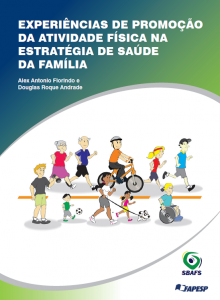
2015
Autores: Alex Antônio Florindo e Douglas Roque Andrade. Editora SBAFS – Sociedade Brasileira de Atividade Física e Saúde. Apoio FAPESP, 2015.
Você pode baixar este livro respondendo este questionário.
>CLIQUE AQUI<
.
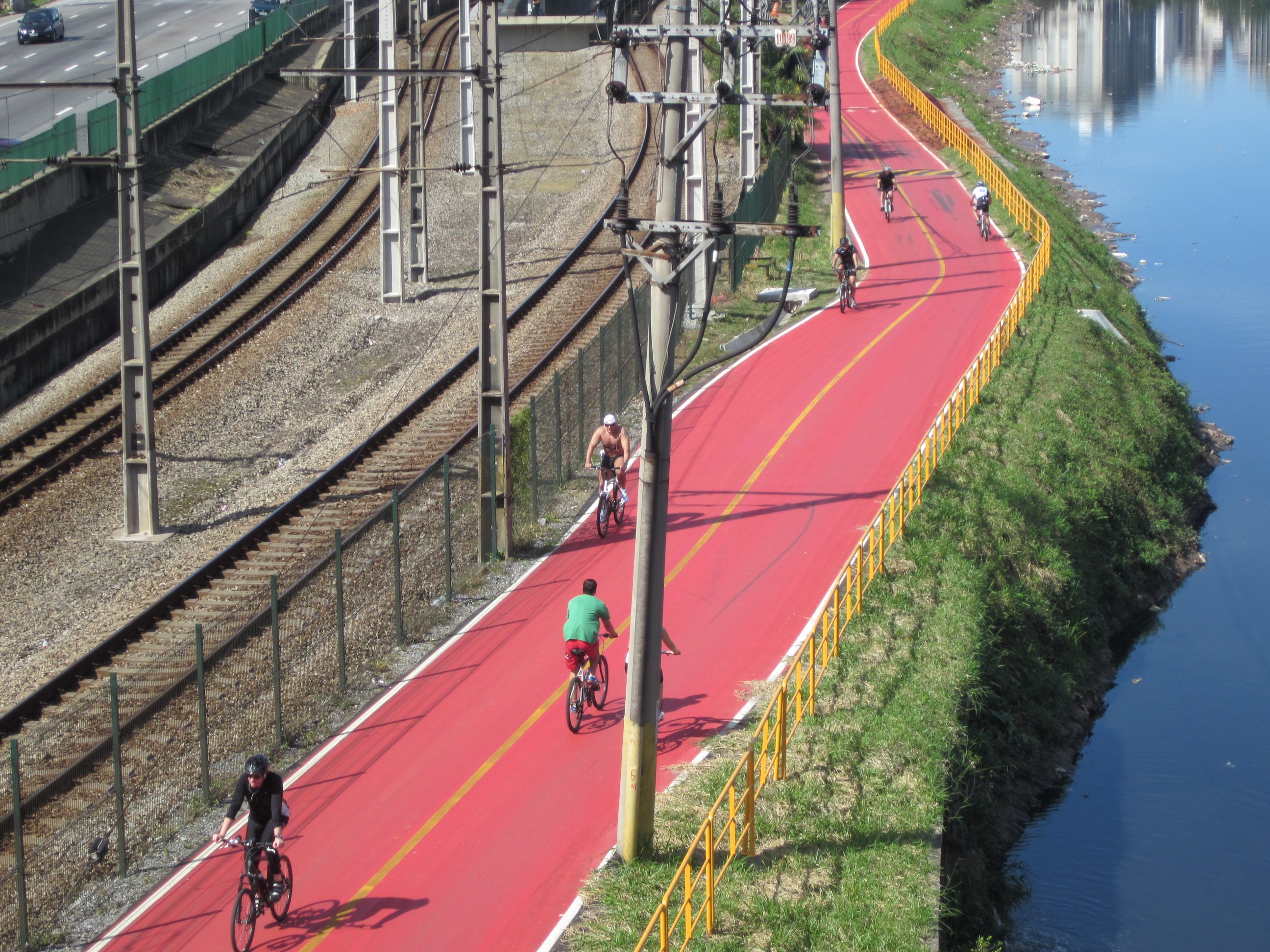
Estudo publicado no Int. J. Environ. Res. Public Health no ano de 2018 intitulado Cycling for Transportation in Sao Paulo City: Associations with Bike Paths, Train and Subway Stations mostrou que a presença de ciclovias e estações de metrô e trem nas proximidades das residências das pessoas estão associadas com maior uso da bicicleta como forma de transporte. Este estudo foi liderado pelo professor Alex Florindo e teve a colaboração de pesquisadores do GEPAF-USP e de professores e pesquisadores do Departamento de Geografia da FFLCH-USP, do Departamento de Epidemiologia da FSP-USP, do Departamento de Medicina Preventiva da FM-USP e de pesquisadores Australianos. O principal resultado mostrou que as pessoas adultas que moram a até 500 metros de distância de uma ciclovia ou a até 1500 metros de distância de estações de metrô ou trem tem mais chances de usar a bicicleta como forma de transporte em comparação com aquelas pessoas que residem em locais sem a presença destas estruturas. A pesquisa foi realizada tendo como base os dados do Inquérito de Saúde de São Paulo (ISA) realizado em 2015. Os pesquisadores verificaram a quantidade e distância destas estruturas no entorno das residências das pessoas que foram entrevistadas no inquérito que incluiu questões sobre a prática de atividade física. Apesar deste resultado importante, o estudo verificou também que a prevalência de pessoas que usam a bicicleta como forma de transporte ainda e baixa (somente 5% das pessoas usam a bicicleta como forma de transporte) e o uso é mais comum em pessoas do sexo masculino, nos solteiros, nas pessoas que praticam atividade física no lazer e nas pessoas com propriedade de bicicleta nas residências. A recomendação é para que seja mantida a políticas de ampliação e melhora das ciclovias no município de São Paulo. O artigo também discute que não basta somente construir ciclovias para aumentar a prevalência do uso de bicicleta na população paulistana, mas é preciso também melhorar a infraestrutura das estações de trem e metrô, como, por exemplo, estacionamentos para bicicletas e ampliação dos horários para a circulação com as bicicletas nestes modais. Além disso, a melhora dos programas de compartilhamento de bicicletas e principalmente a implementação de intervenções comunitárias vindas do poder público que incentivem as pessoas a usarem mais as bicicletas como alguns programas desenvolvidos em países como a Colômbia e a ampliação dos programas de fechamento de ruas e avenidas nos finais de semana para a circulação de bicicletas são muito importantes para que possamos aumentar a quantidade de ciclistas em São Paulo. O estudo foi financiado pela FAPESP (processo 2014/12681-1) e o artigo pode ser obtido na íntegra na página da revista: http://www.mdpi.com/1660-4601/15/4/562.
- Florindo AA, Barrozo LV, Turrell G, Barbosa JPAS, Cabral-Miranda W, Cesar CLG, Goldbaum M.Int J Environm Res Public Health. 2018 Mar 15;562.Link: DOI 10.3390/ijerph15040562
- Rezende LFM, Garcia LMT, Mielke GI, Lee DH, Wu K, Giovannucci E, Eluf-Neto J. Cancer Epidemiology. 2018 Oct 56; 38-45. Link: DOI 10.1016/j.canep.2018.07.006
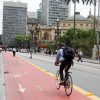

Notícia publicada na Agência FAPESP, em 08 de junho de 2018.
Estudo feito por pesquisadores da USP apontou que morar perto de ciclovias e ciclofaixas aumentou em 154% a chance de usar a bicicleta como meio de transporte.
http://agencia.fapesp.br/construcao_de_ciclovias_em_sao_paulo_incentiva_uso_de_bicicletas/27977/


Já está no ar mais um episódio do podcast “Detetives da SAÚDE”, da Revista Saúde, com a participação do Prof. Alex Florindo (GEPAF-USP), Nathalie Prado (Cidade Ativa) e Maria Tereza (Revista Saúde).
Com o tema “O sedentarismo não é só culpa sua”, o bate-papo refletiu sobre as causas do sedentarismo para além de apenas uma questão de falta de motivação, da falta de tempo ou preguiça!
O podcast está disponível na página da revista e também nos links diretos para ouvir no Spotify, Deezer e Youtube!
Spotify:
https://open.spotify.com/episode/6OPgtB2VRpwMPqJvQsPr8k
Deezer:
https://www.deezer.com/episode/40398302…
Youtube:
https://youtu.be/Pf1Ik8xdcbs

Ms. Margarethe Thaisi Garro Knebel
Estudante de doutorado na Faculdade de Saúde Pública da Universidade de São Paulo
Link lattes

A conversa discute a prática de atividade física, comportamento sedentário e hábitos de sono em crianças, adolescentes e famílias na época de quarentena e distanciamento social.
O comentário traz recomendações para famílias, profissionais de saúde, professores e educadores, mídia e governantes de como trabalhar com estes hábitos neste período.
O artigo pode ser obtido pelo link: https://www.thelancet.com/pdfs/journals/lanchi/PIIS2352-4642(20)30131-0.pdf

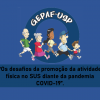
GEPAF-USP colabora nas ações contra os problemas gerados pela Pandemia COVID-19.
O grupo promoverá uma discussão no dia 19 de maio sobre “Os desafios da promoção da atividade física no SUS diante da pandemia COVID-19”. O evento tem como objetivo discutir como o SUS pode contribuir para amenizar os problemas de mudanças de comportamentos de atividade física devido à pandemia e também arrecadar doações para a campanha de ajuda que vem sendo organizada pelo Instituto de Esporte e Educação e tem o apoio da Sociedade Brasileira de Atividade Física e Saúde.
A inscrição é limitada para 100 pessoas e pode ser feita pelo e-mail: eliz.guima@usp.br.
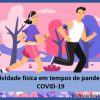
A pandemia de COVID-19 é o maior problema de saúde pública do século XXI, que causará diversos problemas sociais como aumento da pobreza e desigualdades sociais. A partir da decretação da pandemia e da recomendação da Organização Mundial da Saúde para que os países adotassem medidas de restrição de circulação e de distanciamento social comunitário para o controle da disseminação da doença na população, nós temos observado mudanças bruscas em alguns comportamentos e um dos que mais tem mudado é a prática de atividade física.
A entrevista está disponível no link: https://espacourbanoesaude.iea.usp.br/atividade-fisica-em-tempos-de-pandemia-covid-19/
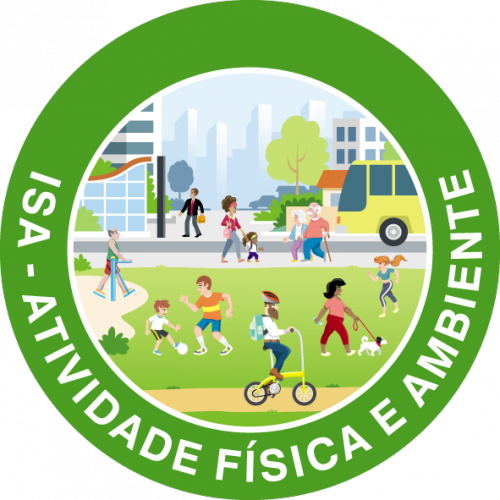
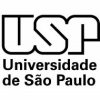
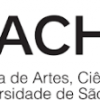
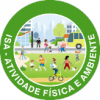

O Inquérito de Saúde de São Paulo (ISA) é uma pesquisa de saúde realizada no município de São Paulo desde 2003 por professores da USP com o apoio da Secretaria Municipal de Saúde de São Paulo. Em 2020, foi iniciada uma nova etapa do ISA, nomeada “ISA-Atividade Física e Ambiente”, que tem como objetivo reavaliar as práticas de atividades físicas e o peso corporal da população que foi entrevistada em 2014/2015. Serão entrevistadas novamente pessoas maiores de 18 anos que ainda morem no município de São Paulo.
Entre outubro de 2020 e fevereiro de 2021, as entrevistas foram conduzidas por telefone devido à pandemia de COVID-19. Nesse período, algumas entrevistadoras visitaram alguns domicílios somente para atualizar os contatos telefônicos (clique aqui para ver as credenciais).
O objetivo principal será verificar se houve mudanças nas práticas de esportes, exercícios físicos, uso de bicicleta, práticas de caminhada, no peso corporal, na saúde mental e nos níveis socioeconômicos. Será investigado também se os locais onde as pessoas vivem e trabalham podem favorecer as práticas de atividades físicas, como por exemplo, disponibilidade de praças, parques, ciclovias, estações de metrô e trem, comércios e serviços nas proximidades. Por fim, será investigado o impacto do distanciamento social/quarentena devido à pandemia de COVID-19 nas práticas de atividades físicas.
O ISA-Atividade Física e Ambiente será uma fonte importante de conhecimento com real potencial para dar suporte para ações, programas de promoção da atividade física e prevenção da obesidade. As informações coletadas dos voluntários mostrarão como e o quanto os comportamentos de saúde mudaram nos últimos anos e o quanto estas mudanças estão relacionadas com os locais onde as pessoas vivem e trabalham.
Essa pesquisa conta com o apoio da Fundação de Amparo à Pesquisa do Estado de São Paulo (FAPESP) e todas informações coletadas serão utilizadas exclusivamente para fins de pesquisa.
Estamos à disposição para tirar qualquer tipo de dúvida sobre a pesquisa.
Dr. Alex Antonio Florindo
Líder do Grupo de Estudos e Pesquisas Epidemiológicas em Atividade Física e Saúde da USP.
Telefones: (11) 98558-8617 ou (11) 3091-8157
- Florindo AA, Barbosa JPAS, Barrozo LV, Roque DA, Souza BA, Failla MA, Gunn L, Mavoa S, Turrel G, Goldbaum M. Journal of Transport & Health 2019 Dez 15; 100611 Link: DOI 10.1016/j.jth.2019.100611
- Cruz MS, Garcia LMT, Andrade DR, Florindo AA. Revista Brasileira de Atividade Física e Saúde 2019 Dez 23;e0041 Link: DOI 10.12820/rbafs.23e0041
- Guerra PH, Barbosa Filho VC, Almeida J, Silva LS, Pinto MTV, Leonela RM, Ribeiro EHC, Florindo AA. Revista Paulista de pediatria 2019 Nov 38; e2018112 Link: DOI 10.1590/1984-0462/2020/38/2018112
- Barbosa JPAS, Guerra PH, Santos CO, Oliveira APNB, Gavin T, Florindo AA. International Journal of Environmental Research and Public Health 2019 Ago 16; 3135. Link: DOI 10.3390/ijerph16173135
Dias TG, Nunes APBDO, Santos CDO, Cruz MDSD, Guerra PH, Bernal RTI, Florindo AA. Revista Brasileira de Epidemiologia 2020 Out 23; e200099 Link: DOI 10.1590/1980-549720200099
- Ribeiro EHC, Guerra PH, Oliveira ACD, Silva KSD, Santos P, Santos R, Florindo AA. Revista de Saúde Pública. 2020 Jun 54; 59 Link: DOI 10.11606/s1518-8787.2020054001977
Florindo AF, Teixeira IP, Barrozo LV, Sarti FM, Fisberg RM, Andrade DR, Totaro LM. BMC Public Health 21, 283 (2021) Link: DOI 10.1186/s12889-021-10262-5
- Dr. Eduardo Quieroti Rodrigues
Tese de doutorado apresentada ao programa de Pós-graduação Nutrição em Saúde Pública da Universidade de São Paulo. Download PDF
- Me. Tulio Gamio Dias
Dissertação de mestrado apresentada ao Programa de Ciências da Atividade Física da Escola de Artes, Ciências e Humanidades da Universidade de São Paulo. Download PDF
2016 – em andamento
- O objetivo do presente projeto de pesquisa será investigar a associação entre os indicadores de ambiente construído com as prevalências de excesso de peso e de obesidade em adultos residentes no município de São Paulo. Este projeto será desenvolvido em colaboração com a Professora Lígia Vizeu Barroso, do Departamento de Geografia da FFLCH-USP, e da Gerência de Geoprocessamento e Informações Socioambientais da Prefeitura de São Paulo. Os resultados deste projeto servirão para compreender a relação entre os indicadores de ambiente construído e as prevalências de excesso de peso e de obesidade numa megalópole como São Paulo, e poderão servir para a promoção de ambientes saudáveis que atuem na prevenção deste importante problema de Saúde Pública.
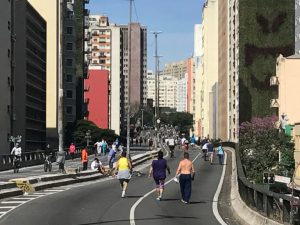
Este projeto, teve como objetivo avaliar o elevado presidente João Goulart, popularmente chamado de “Minhocão”, como área de prática de atividade física no tempo livre de lazer, no centro de São Paulo. É desenvolvido pelo doutorando da FSP-USP, Eduardo Quieroti Rodrigues, com a orientação do Prof. Dr. Alex Antonio Florindo, da EACH-USP.
Abaixo, estão descritas algumas etapas referentes a esse projeto:
A primeira, ocorrida de julho a dezembro de 2017, foi investigado, por sistema adaptado de observação direta para a prática de atividade física, o tipo de atividade física, faixa etária e sexo dos usuários que realizavam atividade física no tempo livre de lazer no “Minhocão”, nos dias de semana a noite, e nos finais de semana, durante o dia e noite.
Neste momento, está ocorrendo a segunda fase do projeto, que tem como objetivo verificar o nível de atividade física no tempo livre de lazer dos residentes próximos ao “Minhocão”, além das barreiras pessoais e ambientais, desses, para a prática de atividade física no tempo livre de lazer.
Para esta etapa, inicialmente, são sorteados endereços dos residentes que moram até 1500 metros do “Minhocão”, esses são contatados por telefone, informados sobre a pesquisa e convidados à participar. A partir disso, é solicitado o e-mail com intenção de participar, sendo enviado um formulário online que contém o termo de consentimento livre e esclarecido, e as perguntas propostas. Quando não se consegue o contato telefônico, é enviada ou entregue uma carta convite para participação. Nessa, além da explicação e convite à participação, está descrito o link do formulário para que através desse seja respondido pelo residente.
Florindo, A.A., Turrell, G., Garcia, L.M.T. et al. BMC Public Health 21, 347 (2021). Link DOI: 10.1186/s12889-020-10123-7
- Emanuel Péricles Salvador
Dissertação de mestrado apresentada ao programa de Saúde Pública da Universidade de São Paulo. Download PDF
- Evelyn Fabiana Costa
Dissertação de mestrado apresentada ao programa de Pós-graduação Nutrição em Saúde Pública. Download PDF
Dissertação de mestrado apresentada ao Programa de Pós-Graduação Nutrição em Saúde Pública da Faculdade de Saúde Pública da Universidade de São Paulo Download PDF
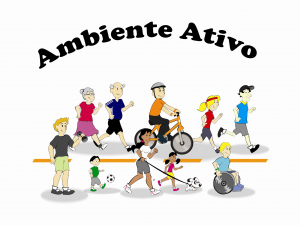
Aqui você pode baixar todas as cartilhas do projeto Ambiente Ativo
Vença os desafios e faça atividade física!
Onde praticar atividade física
Como praticar exercícios físicos
Como podemos praticar atividade física
10 dicas para um estilo de vida saudável
Confira também o material de saúde do Programa Educativo
10 passos para uma alimentação saudável
Consulte aqui os guias de alimentação do Ministério da Saúde-Brasil
Artigos da coorte – Inquérito de Saúde de São Paulo: Atividade Física e Ambiente 2020/2021
Study protocol: health survey of Sao Paulo: ISA-Physical Activity and Environment
AA Florindo, IP Teixeira, LV Barrozo, FM Sarti, RM Fisberg, DR Andrade, LMT Garcia. BMC Public Health (2021) 21, 283 DOI 10.1186/s12889-021-10262-5
Artigos da linha de base – Inquérito de Saúde de São Paulo (ISA) 2014/2015
Mix of destinations and sedentary behavior among Brazilian adults: a cross-sectional study
AA Florindo, G Turrel, LMT Garcia, JPAS Barbosa, MS Cruz, MA Failla, BS de Aguiar, LV Barrozo, M Goldbaum. BMC Public Health 2021, 21, 347 DOI 10.1186/s12889-020-10123-7
Walking for transportation and built environment in Sao Paulo city, Brazil
AA Florindo, JPAS Barbosa, LV Barrozo, DR Andrade, BS de Aguiar, MA Failla, L Gunn, S Mavoa, G Turrel, M Goldbaum. Journal of Transport & Health 2019 Volume 15, 100611 DOI 10.1016/j.jth.2019.100611
Cycling for Transportation in Sao Paulo City: Associations with Bike Paths, Train and Subway Stations
AA Florindo, LV Barrozo, G Turrel, JPAS Barbosa, W Cabral-Miranda, CLG Cesar, M Goldbaum. International Journal of Environmental Research and Public Health 2018 Mar 21;15(4):562 DOI 10.3390/ijerph15040562
Public Open Spaces and Leisure-Time Walking in Brazilian Adults
AA Florindo, LV Barrozo, W Cabral-Miranda, EQ Rodrigues, G Turrel, M Goldbaum, CLG Cesar, B Giles-Corti. International Journal of Environmental Research and Public Health 2017 14(6):553 DOI 10.3390/ijerph14060553
Nº: 4587
Área de conhecimento: Saúde Coletiva
Nº do processo FAPESP: 2017/17049-3
Título do projeto: Ambiente Construído, Atividade Física e Estado Nutricional em Adultos: um Estudo Longitudinal
Área de atuação: Epidemiologia da Atividade Física
Quantidade de vagas: 1
Início: 01/01/2022
Pesquisador principal: Alex Antonio Florindo
Unidade/Instituição: Escola de Artes, Ciências e Humanidades da Universidade de São Paulo
Data limite para inscrições: 10/11/2021
Publicado em: 07/10/2021
Localização: Rua Arlindo Bettio, 1000, São Paulo
E-mail para inscrições: aflorind@usp.br
O Grupo de Estudos e Pesquisas Epidemiológicas em Atividade Física e Saúde (GEPAF) da USP abre chamada para uma oportunidade de Bolsa de Pós-Doutorado vinculada a Projeto Temático. O objetivo será investigar as relações entre o ambiente construído nas proximidades das residências e dos locais de trabalho com as práticas de atividades físicas no lazer e como forma de deslocamento, em amostra de população adulta do município de São Paulo. O projeto já teve duas coletas de dados (2014/2015 e 2020/2021) e terá uma terceira coleta em 2022.
O local de trabalho deste bolsista será na Escola de Artes, Ciências e Humanidades da USP, São Paulo, SP, Brasil.
A vaga está aberta a candidatos brasileiros e estrangeiros que tenham recebido o título de doutor há menos de sete anos no país ou no exterior. Serão valorizados no processo seletivo o conhecimento prévio sobre modelagem baseada em agentes e análises de custo-efetividade, conhecimento em análise de dados epidemiológicos, bioestatística, análises multivariadas, análises multinível e capacidade de redigir artigos científicos.
Os candidatos devem enviar e-mail com o assunto BOLSA-PD/GEPAF/USP, anexando o curriculum vitae (Lattes completo para brasileiros) e carta de intenção.
A bolsa terá duração de 24 meses com dedicação exclusiva (40 horas/semana) e valor de R$ 7.373,10 mensais, mais Reserva Técnica equivalente a 10% do valor anual da bolsa para atender a despesas imprevistas e diretamente relacionadas à atividade de pesquisa
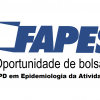
Nº: 4587
Área de conhecimento: Saúde Coletiva
Nº do processo FAPESP: 2017/17049-3
Título do projeto: Ambiente Construído, Atividade Física e Estado Nutricional em Adultos: um Estudo Longitudinal
Área de atuação: Epidemiologia da Atividade Física
Quantidade de vagas: 1
Início: 01/01/2022
Pesquisador principal: Alex Antonio Florindo
Unidade/Instituição: Escola de Artes, Ciências e Humanidades da Universidade de São Paulo
Data limite para inscrições: 10/11/2021
Publicado em: 07/10/2021
Localização: Rua Arlindo Bettio, 1000, São Paulo
E-mail para inscrições: aflorind@usp.br
- Resumo
O Grupo de Estudos e Pesquisas Epidemiológicas em Atividade Física e Saúde (GEPAF) da USP abre chamada para uma oportunidade de Bolsa de Pós-Doutorado vinculada a Projeto Temático. O objetivo será investigar as relações entre o ambiente construído nas proximidades das residências e dos locais de trabalho com as práticas de atividades físicas no lazer e como forma de deslocamento, em amostra de população adulta do município de São Paulo. O projeto já teve duas coletas de dados (2014/2015 e 2020/2021) e terá uma terceira coleta em 2022.
O local de trabalho deste bolsista será na Escola de Artes, Ciências e Humanidades da USP, São Paulo, SP, Brasil.
A vaga está aberta a candidatos brasileiros e estrangeiros que tenham recebido o título de doutor há menos de sete anos no país ou no exterior. Serão valorizados no processo seletivo o conhecimento prévio sobre modelagem baseada em agentes e análises de custo-efetividade, conhecimento em análise de dados epidemiológicos, bioestatística, análises multivariadas, análises multinível e capacidade de redigir artigos científicos.
Os candidatos devem enviar e-mail com o assunto BOLSA-PD/GEPAF/USP, anexando o curriculum vitae (Lattes completo para brasileiros) e carta de intenção.
A bolsa terá duração de 24 meses com dedicação exclusiva (40 horas/semana) e valor de R$ 7.373,10 mensais, mais Reserva Técnica equivalente a 10% do valor anual da bolsa para atender a despesas imprevistas e diretamente relacionadas à atividade de pesquisa.
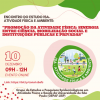
Pesquisa ISA: Atividade Física e Ambiente
Escola de Artes, Ciências e Humanidades da Universidade de São Paulo
FAPESP – Processo no 2017/17049-3
Grupo de Estudos e Pesquisas Epidemiológicas em Atividade Física e Saúde da Universidade de São Paulo (GEPAF-USP)
Convite:
encontro do estudo ISA-Atividade Física e Ambiente: “Promoção da atividade física: sinergia entre ciência, mobilização social e instituições públicas e privadas”
No dia 10/12/2021 os pesquisadores Grupo de Estudos e Pesquisas Epidemiológicas em Atividade Física e Saúde da Universidade de São Paulo (GEPAF-USP) organizarão um evento para a apresentação de resultados parciais e de planos futuros relacionados à pesquisa ISA-Atividade Física e Ambiente. O objetivo principal desta pesquisa é estudar as mudanças ambientais ocorridas no município de São Paulo a partir de 2015 e suas relações com variáveis de saúde, como as práticas de caminhada como deslocamento e como lazer, o uso de bicicleta, as práticas de esportes e exercícios físicos, a influência na prevenção da obesidade, de doenças mentais e de doenças cardiovasculares e metabólicas, no sono e na qualidade de vida das pessoas residentes na cidade. Vamos avaliar também a influência da mobilidade urbana nestas variáveis. Temos uma amostra de 4 mil pessoas que foram avaliadas pela primeira vez entre os anos de 2014/2015 e 35% das mesmas pessoas (1400 adultos) foram reavaliadas por meio de entrevistas telefônicas entre outubro de 2020 e fevereiro de 2021. Os endereços residenciais estão espalhados por todas as regiões da cidade. Temos também uma avaliação de itens de ambiente construído de toda a cidade dos últimos cinco anos, principalmente tendo como base a biblioteca GEOSAMPA. Além disso, temos avaliações por imagens do Google Earth do entorno das residências das pessoas avaliadas. Nós ouvimos vários líderes relacionados ao tema da pesquisa, no início do projeto e agora chegou o momento de seguirmos interagindo com mais pessoas e instituições. Este encontro tem como objetivo compartilhar o processo e os resultados parciais e descobrir juntos como pesquisadores, lideranças de ONGs com e sem fins lucrativos, coletivos, gestores públicos podem desenvolver ações estratégicas para impactar as políticas públicas para a promoção de ambientes saudáveis para a prática de atividade física, mobilidade ativa, promoção da saúde e prevenção da obesidade e de doenças na cidade de São Paulo. O evento tem o apoio da Sociedade Brasileira de Atividade Física e Saúde e será realizado totalmente online no dia 10/12/2021, das 9:00 às 12:00 e o link da plataforma para ter acesso é: https://bit.ly/canal-sbafs.
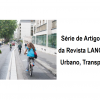
As forças mais fortes que afetam o processo saúde-doença estão fora do controle direto da saúde pública tradicional e dos setores médicos. Os determinantes sociais de nível socioeconômico, educação, violência e moradia tem fortes influências sobre a saúde e são muito discutidos. Até recentemente, havia muito menos atenção sobre os efeitos do desenho, urbano e do transporte sobre a saúde. A primeira Série Lancet sobre Desenho Urbano, Transporte e Saúde resumiu as volumosas evidências relacionadas a múltiplos resultados em saúde. O planejamento urbano e o transporte são impulsionados principalmente por políticas públicas. Assim, são também determinantes sociais da saúde e constituem um meio de intervenção. As mesmas estratégias políticas que irão melhorar a saúde são diretamente relevantes para reduzir as desigualdades na saúde e aumentar a sustentabilidade ambiental.
Na primeira série, argumentamos que melhorar o planejamento urbano – ou seja, uso do solo, transporte, infraestrutura social e planejamento econômico – deveria ser uma prioridade maior para a saúde pública em todos os países. Identificamos oito intervenções integradas de planejamento regional e política de desenho urbano local que, quando combinadas, incentivam o uso a pé, de bicicleta e de transporte público, ao mesmo tempo em que reduzem o uso de veículos motorizados particulares. Argumentamos que, juntas, essas intervenções podem criar cidades compactas mais saudáveis e sustentáveis que reduziriam os fatores de risco ambientais, sociais e comportamentais que afetam as escolhas de estilo de vida, níveis de tráfego, poluição ambiental, ruído e crime. Argumentamos que o setor da saúde, incluindo a saúde pública e os Ministérios da Saúde, devem liderar a defesa de um planejamento multissetorial integrado de cidades e transportes que priorize resultados de saúde, sustentabilidade e habitabilidade. Além disso, recomendamos o estabelecimento de um conjunto de indicadores para referenciar e monitorar o progresso em direção à conquista de cidades mais compactas que promovam a saúde e reduzam as iniquidades em saúde.
A segunda Série Desenho Urbano, Transporte e Saúde baseia-se na primeira. No entanto, vai além de descrever por que devemos fazer a transição rápida para cidades saudáveis e sustentáveis globalmente – para focar em como e o que deve mudar para alcançar essa transição. A Série 2 explora o estado da arte das políticas de planejamento urbano examinando 25 cidades diversas como estudos de caso. Ele explora a viabilidade de avaliar o projeto urbano regional e local e a política de planejamento de transporte e medir os recursos de projeto urbano e de transporte recomendados na Série 1, para desenvolver um sistema global de indicadores que podem ser usados para avaliar e monitorar o progresso no sentido de se tornarem cidades saudáveis e sustentáveis . Na segunda série, procuramos responder a várias questões-chave:
Artigo Científico 1: Traz os indicadores elaborados na Série 1 para a criação de cidades saudáveis e sustentáveis e como eles foram aprimorados para serem utilizados na Série 2.
Artigo Científico 2: É viável medir as políticas nas cidades em todo o mundo, e as cidades têm as estruturas regionais e locais de desenho urbano e planejamento de transporte para serem cidades saudáveis e sustentáveis? Se não, quais ações são necessárias?
Artigo Científico 3: Quais são os limites para o desenho urbano e recursos de transporte necessários para alcançar estilos de vida ativos e sustentáveis? Que ações são necessárias para incorporar limites informados por evidências nas políticas de planejamento?
Artigo Científico 4: É viável medir consistentemente o desenho urbano e os recursos de transporte que promovam estilos de vida ativos e sustentáveis nas cidades do mundo todo? E existem desigualdades no acesso a ambientes de apoio dentro e entre as cidades? Que ações são necessárias para melhorar sua medição e aplicação no planejamento urbano?
Artigo 5: Com base nas conclusões de todos os artigos da Série, quais são as ações combinadas necessárias para passar das evidências e a aplicação desses indicadores como ferramentas para criar cidades saudáveis e sustentáveis? E para onde a seguir?
Os pesquisadores representantes do Brasil que são co-autores da Série 2 foram os professores Alex Antonio Florindo, que é epidemiologista, professor da Escola de Artes, Ciências e Humanidades da Universidade de São Paulo, líder do Grupo de Estudos e Pesquisas Epidemiológicas em Atividade Física e Saúde da Universidade de São Paulo e orientador do Programa de Nutrição em Saúde Pública da Faculdade de Saúde Pública da Universidade de São Paulo; e a professora Ligia Vizeu Barrozo, que é geógrafa e professora da Faculdade de Filosofia, Letras e Ciências Humanas da Universidade de São Paulo e líder do Grupo Espaço Urbano e Saúde do Instituto de Estudos Avançados da Universidade de São Paulo.
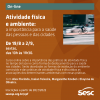
Pesquisadores do GEPAF-USP irão ministrar nos dias 19, 27 de agosto e 02 de setembro de 2022, o curso online sobre a importância das práticas de atividade física no tempo de lazer e como forma de deslocamento para a saúde nas cidades. Serão abordadas as formas de avaliação do ambiente construído e das práticas de atividade física e discutidas as associações dos determinantes ambientais com essas práticas.
O curso é fruto de uma parceria entre o Centro de Pesquisa e Formação do SESC São Paulo e o GEPAF.
Para inscrições e mais informações, acesse o link: https://centrodepesquisaeformacao.sescsp.org.br/atividade/atividade-fisica-e-ambiente-a-importancia-para-a-saude-das-pessoas-e-das-cidades

Luis Carlos de Oliveira
Doutorando do PPG em Educação Física da Universidade São Judas Tadeu
Link lattes
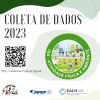
Os pesquisadores do estudo “ISA-Atividade Física e Ambiente” irão iniciar uma nova coleta em 2023 para verificar as práticas de esportes, exercícios físicos, o uso de bicicleta, as práticas de caminhada, o peso corporal, os deslocamentos das pessoas, a opinião sobre segurança, a qualidade do sono, algumas doenças e algumas informações sociais e econômicas de pessoas que estão sendo acompanhadas desde 2014 e 2015.
Nesta etapa de 2023 nossos entrevistadores estão realizando visitas domiciliares para atualização dos endereços residenciais e dos telefones das pessoas, entrevistas telefônicas para as coletas de dados e novas visitas domiciliares para convidar as pessoas a usarem no punho um aparelho denominado acelerômetro, parecido com um relógio, e que serve para medir atividade física, tempo sentado e qualidade do sono.
Todos os entrevistadores que estão trabalhando por telefone farão a identificação da pesquisa tirando todas as suas dúvidas dos participantes. Os entrevistadores que estão indo nas residências estão devidamente identificados com crachás, aventais e camisetas.
A pesquisa tem o apoio da Secretaria Municipal de Saúde da cidade de São Paulo e da Fundação de Amparo à Pesquisa do Estado de São Paulo – FAPESP, e foi aprovada pelos Comitês de Ética da USP e da própria Secretaria Municipal de Saúde de São Paulo. Por isso lembramos que todos os dados serão utilizados somente para fins de pesquisa e nunca faremos nenhuma identificação pessoal dos seus dados.
A participação da população é muito importante para dar suporte para ações e programas de promoção da saúde, prevenção de doenças e para melhorar a cidade de São Paulo para a população.
Estamos à disposição para tirar qualquer tipo de dúvida sobre a pesquisa, podendo entrar em contato pelos seguintes contatos:
Professor Alex Antonio Florindo: (11) 3091-8157; e-mail: gepaf.usp@gmail.com; página na internet: www.each.usp.br/gepaf.
Comitê de Ética em Pesquisa da USP-Leste: (11) 3091-1046; e-mail: cepeach@usp.br; ou Rua Arlindo Béttio, 1000, São Paulo, SP.
Comitê de Ética em Pesquisa da Secretaria Municipal de Saúde: (11) 3846-4815 – Ramais 228, 242, 243; e-mail: cep.smsgabinete@prefeitura.sp.gov.br ou endereço: Rua Gomes de Carvalho, 250, CEP: 04547-001, São Paulo, SP.

Lúcia de Fátima Querido Rodrigues
Profissional de Educação Física- Centro Universitário das Faculdades Metropolitanas Unidas, FMU, Brasil.
Link lattes
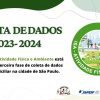
Os pesquisadores do estudo “ISA-Atividade Física e Ambiente” estão realizando uma nova coleta para verificar as práticas de esportes, exercícios físicos, o uso de bicicleta, as práticas de caminhada, o peso corporal, os deslocamentos das pessoas, a opinião sobre segurança, a qualidade do sono, algumas doenças e algumas informações sociais e econômicas de pessoas que estão sendo acompanhadas desde 2014 e 2015.
Nesta etapa que iniciou em 2023 e segue sendo realizada em 2024 nossos entrevistadores estão realizando visitas domiciliares para realizar as entrevistas e para convidar as pessoas a usarem no punho um aparelho denominado acelerômetro, parecido com um relógio, e que serve para medir atividade física, tempo sentado e qualidade do sono.
Todos os entrevistadores que compõe nossa equipe de coleta estão devidamente identificados com crachás, aventais e camisetas.
A pesquisa tem o apoio da Secretaria Municipal de Saúde da cidade de São Paulo e da Fundação de Amparo à Pesquisa do Estado de São Paulo – FAPESP, e foi aprovada pelos Comitês de Ética da USP e da própria Secretaria Municipal de Saúde de São Paulo. Por isso lembramos que todos os dados serão utilizados somente para fins de pesquisa e nunca faremos nenhuma identificação pessoal dos seus dados.
A participação da população é muito importante para dar suporte para ações e programas de promoção da saúde, prevenção de doenças e para melhorar a cidade de São Paulo para a população.
Estamos à disposição para tirar qualquer tipo de dúvida sobre a pesquisa, podendo entrar em contato pelos seguintes contatos:
Professor Alex Antonio Florindo: (11) 3091-8157; e-mail: gepaf.usp@gmail.com; página na internet: www.each.usp.br/gepaf.
Comitê de Ética em Pesquisa da USP-Leste: (11) 3091-1046; e-mail: cepeach@usp.br; ou Rua Arlindo Béttio, 1000, São Paulo, SP.
Comitê de Ética em Pesquisa da Secretaria Municipal de Saúde: (11) 3846-4815 – Ramais 228, 242, 243; e-mail: cep.smsgabinete@prefeitura.sp.gov.br ou endereço: Rua Gomes de Carvalho, 250, CEP: 04547-001, São Paulo, SP.

Tamires Roldão da Silva Leite
Graduação em andamento em Pedagogia.
Universidade Virtual do Estado de São Paulo, UNIVESP, Brasil.
Link lattes

Wesley Pereira Dornelas
Graduado em Educação Física pela UNINOVE
Link lattes

Dra. Andreia Alexandra Machado Miranda
Doutorado em Nutrição em Saúde Pública.
Faculdade de Saúde Pública da Universidade de São Paulo, FSP-USP, Brasil.
Link lattes

Dra. Raytta Silva Viana
Doutora em Epidemiologia pela Universidade de São Paulo – USP.
Link lattes








